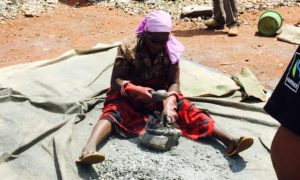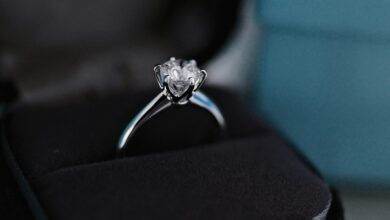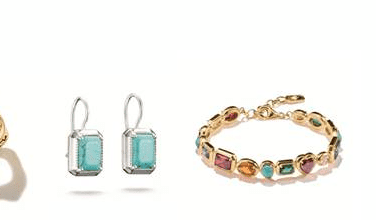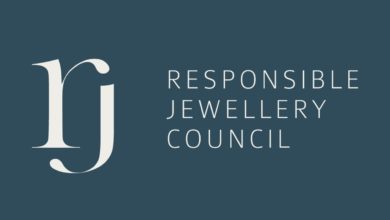A question of integrity
Recent research by the humanitarian group the Humans Rights Watch has found that many companies are over-reliant on the Responsible Jewellery Council for their human rights due diligence. LEWIS CATCHPOLE delves a little deeper
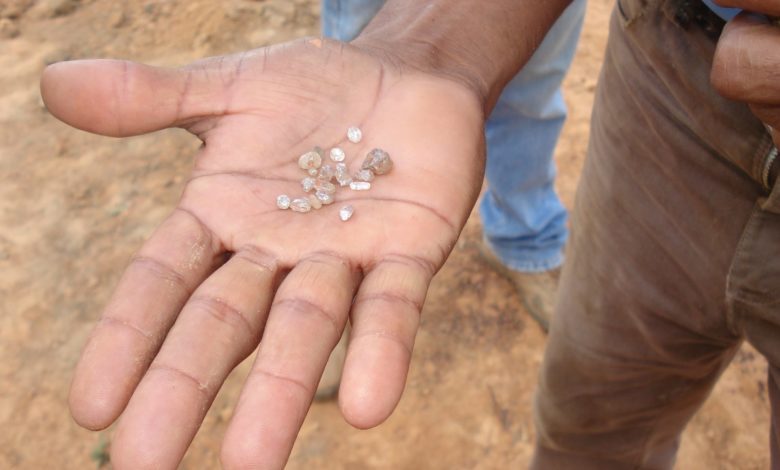
Register to get 1 free article
Reveal the article below by registering for our email newsletter.
Want unlimited access? View Plans
Already have an account? Sign in
The Responsible Jewellery Council (RJC) has in recent years positioned itself as a leader for responsible business in the jewellery industry, but a piece of research published in February by the non-governmental human rights organisation, the Human Rights Watch (HRW), takes issue with the RJC’s governance, standards, and certification systems. Despite what HRW regards as some shortcomings, many jewellery companies use RJC certification to present their gold and diamonds as ‘responsible’, despite variation in what membership of the organisation actually means from firm to firm.
While the industry has a long way to go, a growing number of small jewellers in the UK and elsewhere are sourcing their gold from artisanal mines in Latin America that are certified under the Fairtrade or the Fairmined gold standard. In light of this shift, it’s worth exploring the criticisms levied at the current existing standards, and how independent jewellers can lead the new movement of responsible sourcing.
Existing standards and why they are not enough
Jewellery companies have human rights responsibilities. These responsibilities have been spelled out in the United Nations Guiding Principles on Business and Human Rights, an international standard that was endorsed by the UN Human Rights Council in 2011, and which has since been widely recognised by companies around the world. In addition to the UN Guiding Principles, several global standards have been developed specifically for precious metals and stones, including the Due Diligence Guidance for Responsible Supply Chains of Minerals from Conflict-Affected and High-Risk Areas by the Organisation for Economic Co-operation and Development (OECD), the Kimberley Process Certification Scheme, and two standards by the Responsible Jewellery Council. It’s a lot of a standards, but HRW contends that these standards are lacking.
The Kimberley Process Certification Scheme (KPCS) is the most prominent international standard with regard to diamonds. The KPCS is a government-led international certification scheme, launched in 2003 to prevent trade in ‘conflict diamonds’, which it narrowly defines as rough diamonds used by rebel movements to finance wars against legitimate governments.
The main weakness of the Kimberley Process is that the definition of conflict diamonds is simply too narrow, says Jo Becker, advocacy director children’s rights division at the HRW. “One of the speakers at our launch event for the ‘Hidden Cost of Jewellery’ report documents abuses in Zimbabwe – miners have been killed, arrested, beaten by security and forced into labour. Yet diamonds from Zimbabwe have been certified under the Kimberley process.
“Diamonds produced under very abusive conditions can still be certified under the Kimberley Process because of the conditions may not fit their particular definition of conflict so we would like to see a much wider and broad definition,” she says.
Alan Frampton, managing director of Cred Jewellery, goes further. “I wouldn’t wipe my bottom on the Kimberley process,” he says, “it is such an appalling piece of work, it is written by lawyers to basically kick the can down the road. It doesn’t mean anything – it just means [jewellery brands] have to comply to the law in the country which they are operating, and you have to do that anyway – it just gives too many outs.”
The RJC brings together more than 1,000 companies in the jewellery industry, including jewellers, manufacturers, refiners, and mining companies. It was founded in 2004 by a small group of 14 companies and trade associations interested in increasing consumer confidence that the jewellery they purchase is produced responsibly.
RJC members commit to and are audited against the Code of Practices, a standard that outlines responsible business practices for the jewellery supply chain. Companies can also join an additional optional standard, the Chain-of-Custody Standard. Membership of the RJC, however, is no guarantee that a company’s jewellery is responsibly sourced.
“The RJC plays an important role and has a 1,000 members, we met several times with them and they shared info with us transparently about their standards,” says Becker. “On the one hand they play a positive role in raising responsible sourcing issues in the industry and are getting companies to meet their standards, but we are critical of the RJC because we feel that on three respects they don’t do enough.
“Firstly It is an industry group and the decision making bodies do not include mining communities or NGOs or other stakeholders that should be represented. We also think their standards are not strong enough, there are too many loopholes and the standards don’t yet meet best of class.”
Becker also explains that RJC’s audit process lacked transparency; individual companies are audited but only summaries of audits go to the RJC for accreditation and any information on problems found is not made public. “[Jewellers] are using it as an assurance when it is not enough, it does not provide a guarantee that their supply chains are not clean – on its own it is not enough,” she concludes.
When asked about the criticisms made against it by the HRW, the RJC issued this response: “We have reviewed the Human Rights Watch Report and reject the suggestion that RJC has got ‘flawed’ standards, governance and certification systems. In their correspondence with the RJC, Human Rights Watch have themselves recognised that the RJC has helped make jewellery companies ‘aware of the importance of responsible sourcing and adopt more responsible practices’.
“We are committed to continuing that mission to drive improvement in responsible behaviour across the jewellery industry. The standards themselves are internationally recognised as robust and are continually open to comprehensive and transparent review to ensure they continue to advance the cause of responsibility in the industry.”
Traceability is Key
The main theme running through the findings of the Human Rights Watch report is that a wide majority of the those in the jewellery industry simply can’t trace where their diamond and gold materials are coming from. The Chain-of-Custody Standard promotes traceability and is more rigorous, but adherence to it is optional for RJC members. By early 2018, only 48 of over 1,000 member companies had certified entities under the standard, including 13 jewellers.
Sarah Greenway co-founder of Fair Luxury, an independent group committed to promoting responsible sourcing in the industry, agrees that jewellers having traceability in their supply chain is key, and says it is “about time” jewellers start sharing more openly about their supply chains. “Supply chains on the whole are a non competitive space,” she says, “so it is a part of the business nobody talks about, especially in the jewellery industry, therefore it should not be seen as problematic if they were to work together. It makes absolute sense for jewellers to collaborate on improving their supply chains.

“In comparison other industries are far more traceable, the food industry are very transparent for example and there are very innovative businesses where you can see everything about their supply chain from start to finish – such as the clothing brand Patagonia.”
Frampton, who before joining Cred Jewellery had over 25 years experience supplying companies such as Marks and Spencers, Sainsbury’s and Waitrose, agrees that if it can be done in the food industry there is no excuse for the jewellery industry not to follow suit. “In the fresh produce industry they can trace plants that are only worth two pence back 50-60 years and they could tell the parents of the plant, the grandparents, which greenhouse, which bed, which farm, and which country those plants came from.
“Then we talk about diamond rings worth many tens of thousands of pounds and nobody has any tractability, it is laughable. The issue for me is lack of leadership and lack of dynamism on the part of major companies to make sure their supply chain is being managed responsibly.”
In this instance it is often the smaller companies in the industry that are leading the way in being able to trace their materials all the way back to the mine of origin. Becker explains: “There are an increasing number of small jewellers who are concerned about ethical sourcing that use fairtrade gold which provides more trace-ability.”
In 2004 Cred was the first jeweller to source gold from a mine called Oro Verde in Columbia so they could achieve mine-to-market selling, working with artisanal miners. Then leading up to 2011 Cred was instrumental in the formation of the Alliance of Responsible Mining (ARM) through which they formed the first certificate gold system with the Fairtrade gold and fairmined dual standard in 2011.
“Since 2011 we have not used anything other than fair trade gold – all our wedding rings and engagement rings are fair trade. We don’t give people a choice, if they want to buy normal gold they can go to a normal jeweller. When we bring the gold back to this country we also get a percentage of silver which we then use in our silver jewellery,” says Frampton. “To my knowledge we are the only jewellers who consistently go out to the mines and work with them to develop Fairtrade gold and we work with the mines out in Peru. I have been out to Peru 11 times in six years and we are just about to bring out our next shipment in March which will be 15kg of gold. That will make something in the region of 4,500 wedding rings.”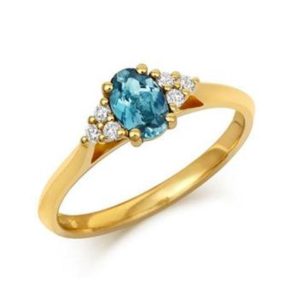
Cred Jewellery has also extended their fair trade supplies to Africa having brought back their first shipments of gold from the Uganda in March with the hope they will be of commercial size by the end of the year.
By June this year Cred will have nearly $400,000 worth of social premiums paid on gold in the last six years. This goes towards improving the social fabric and the communicates that Cred work with. Frampton explains that it is a small price to pay for the piece of mind knowing that nobody was taken advantage of in the making of the product. “With a wedding band costing say a retail price of £400 of that £400 about £15 is what it costs to be Fairtrade, so about 4%, which is absolutely nothing. It gives you the knowledge that the gold in your wedding band which is a symbol of love and commitment and all that is actually made without inflicting grief and poverty on the people that actually did the work in the first place.”
Mounting pressure
Market research by jewellery company De Beers has found that a growing segment of consumers that purchase jewellery, in particular younger millennials aged 18 to 34, are concerned about its origins. A 2016 survey of 75,000 customers in the top markets for diamond jewellery found that 36% of millennials (compared to 27% of older singles) said that the feature of diamond rings they were ‘least likely to compromise on’ was responsible sourcing.
Millennials are expected to make up around 75% of the market in the coming years, and therefore only a matter of time before more pressure is imposed on the industry to tighten up its act, this time from the consumers and their wallets. It is a sentiment echoed by Frampton: “The people who make the decisions are the consumers, and we all see what happens when businesses lie to their consumers – they lose consumer confidence. It won’t be until companies are named and shamed about the fact that they are procuring their raw material and are keeping those people who mine in poverty that we may see change.
“From a personal
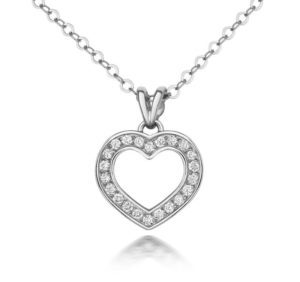
viewpoint we feel strongly about it and we see that the jewellery industry has to stand up and say what the hell are we doing? the fashion industry, the food industry are doing it but the jewellery industry is dragging its feet to maintain its profits without giving any thought to the people producing the raw materials – it’s only a matter of time, if they are not careful they will be caught with their trousers down.”
Becker agrees that the number of consumers who are less willing to compromise on where and how their jewellery is sources can only help make the industry take the matter more seriously although she hopes that will be only one of many factors. “I think that hopefully a number of factors will prompt the industry to take these issues seriously – wanting to be the most responsible company they can be and wanting to be known in the industry as taking leadership and interest from their consumers will be another factor.”
Regardless of what may be the deciding factor there is undoubtedly a rising tide of pressure, perhaps the HRW’s work will be the catalyst convincing a critical mass of those in the jewellery industry to take responsible sourcing seriously.


